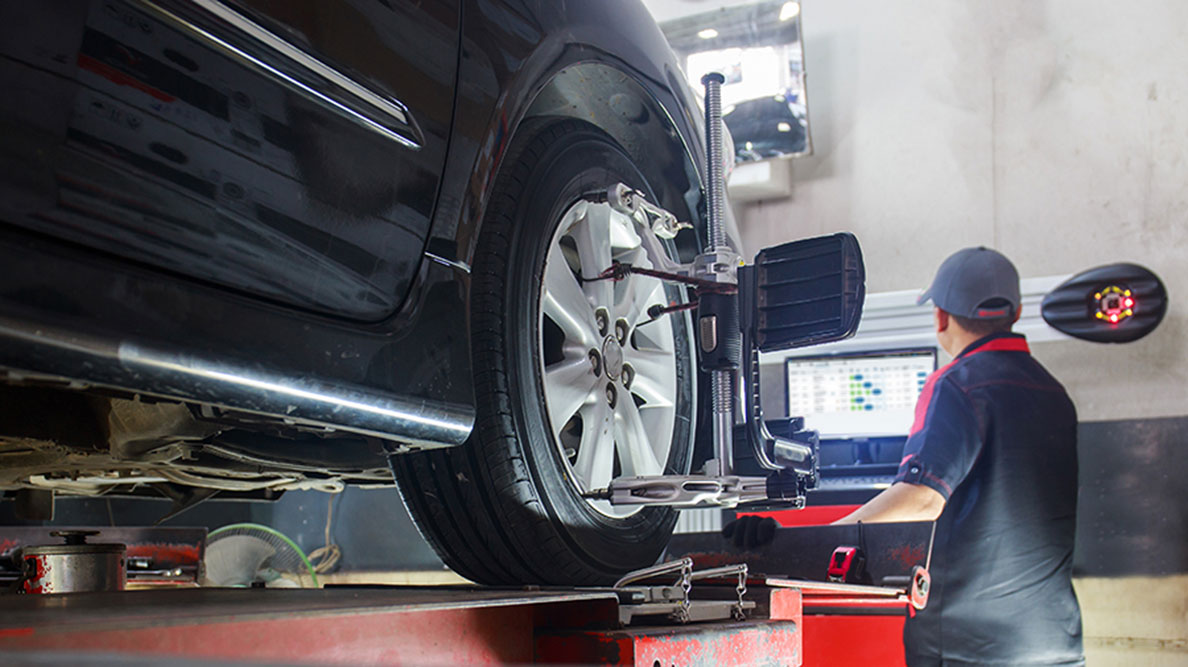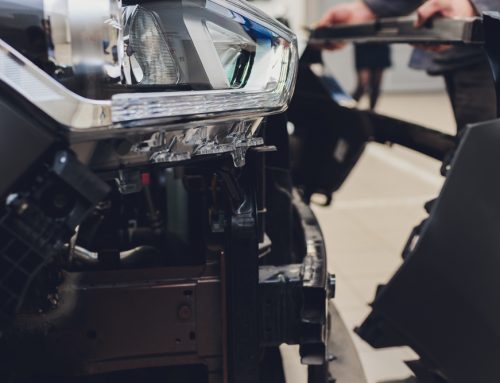AS PUBLISHED IN COLLISION REPAIR MAG :
Trois-Rivières, Quebec — Running a collision centre can be challenging—but ProgiPlanning has a solution.
 The first speaker at CCIF’s Virtual Experience was Charles Aubry, account manager at Progi.
The first speaker at CCIF’s Virtual Experience was Charles Aubry, account manager at Progi.
ProgiPlanning is not a management software, it is a state of mind. It is a program designed to help with capacity planning within the collision repair industry.
“What you can see, you can achieve,” said Alexandre Rocheleau, marketing manager at Progi.
When people think about performance they often focus on achieving better results, either with profitability or productivity. At Progi, a healthy capacity management is a fundamental lever in a performance-driven culture within a collision centre.
ProgiPlanning is a visual to help shops stay on track and see where improvement can be made. It enforces seven steps to help a shop’s overall performance.
“Many times, I visited a collision centre where the floor manager and the technicians didn’t have proper knowledge of the benefits of the UV primer. They often do not even know where the lamp is anymore… They think it is about their primer drying quicker. They are not wrong,” explains Aubry. “But to say the least, UV primer reduces bottlenecks at the paint and refinish steps to improve the all-around shop productivity. It’s a common example that explains why, at Progi, we have golden rules when the time comes to solve a capacity-related problem.”
Aubry details seven steps ProgiPlanning follows to help business owners and managers optimize production and create planning methods to improve their shop’s overall performance, however, you can apply these steps without the software.
The first rule for ProgiPlanning is to establish targets. Find performance indicators that are important for a collision centre; margin, gross sales, key-to-key cycle time, total WIP and produced hours sold per technician on a given period.
For example, let’s say your average produced hours sold per technician is 41 h. Now, set your objective for the next three months at 48 h.
“What is your desired performance? Establish your objectives. They must be realistic, measurable and time bound,” said Aubry.
The second rule is communication.
No one can succeed without proper communication because the team represents the collision centres’ ecosystem, said Aubry. If there is no communication, there is no team. Any objective changes should be clearly communicated to achieve a culture that is performance-focused.
“The better you control your communications, the better you control your success,” said Aubry. “Communication is as important as the water you need to grow a plant.”
Rule three is about maintaining and analyzing. Know how your chosen indicators behave and observe if they are going to reach the objective. In order to follow this rule, one must document and analyze their performance.
“If you are not reaching your objectives, you will need to investigate what are the blocking situations. In capacity planning, bottlenecks, your parts flow, and the quality of your estimates are often the causes leading to production interruptions,” said Aubry.
In the collision industry, bottlenecks occur when the number of damaged vehicles entering the shop exceeds the production capacity. In order to avoid bottlenecks, a shop must consistently maintain and analyze new and different objectives. With a good planning tool, like ProgiPlanning, you can obtain critical data quickly and effortlessly.
Rule four is to not overload the shop. If the system is overloaded there will be operational problems and performance loss. With ProgiPlanning, you can see the shop set up in colour coding to indicate the daily workload in percentage. It is also important to consult your WIP (work in progress) in numbers.
A leaner process is when the WIP is at a maximum of what’s possible to achieve with your team, explained Aubry.
Rule five states shops need to plan repairs at the “best possible moment.” Once you understand your workload and the time it takes, you can schedule repairs at opportune times to maximize proficiency.
Rule six is making sure the facility receives and delivers vehicles every day.
Aubry explains that the old way of receiving on Mondays and hoping for the best until Friday, creates bottlenecks. By receiving and delivering every day, the team can spread things out and maximize the shop’s opportunities.
“It’s a fundamental rule to optimize your productivity and become a pro when it’s time to plan capacity. In this example, we use a severity grid to know when to position your work in your weekly schedule,” said Aubry. “Each collision centre has its own customized severity grid. I work all the time with ProgiPlanning clients to set them up with the best possible grid. With champion users, we often go as far as setting season grids to adapt their schedule with the kind of jobs available on the market.
Lastly, rule number seven is all about challenging one’s limits and ability to adapt to changes. With 2020 being an unpredictable year, repair shops need to be able to adapt to changes and new technology.
“Do you want to go further? Are your able to do better? If the answer is yes, you will have to challenge your ecosystem again to find even better ways to plan your capacity,” said Aubry as he wraps up his CCIF presentation. “Don’t be jealous, be inspired. Performance in your shop is not any different from performance sports,” said Aubry.
Progi is an information technology firm with experts working around the clock to serve digital products for insurance companies, auto recyclers, collision shops and auto part suppliers. As Aubry had mentioned in his presentation, there are ways to always adapt and challenge your limits.





